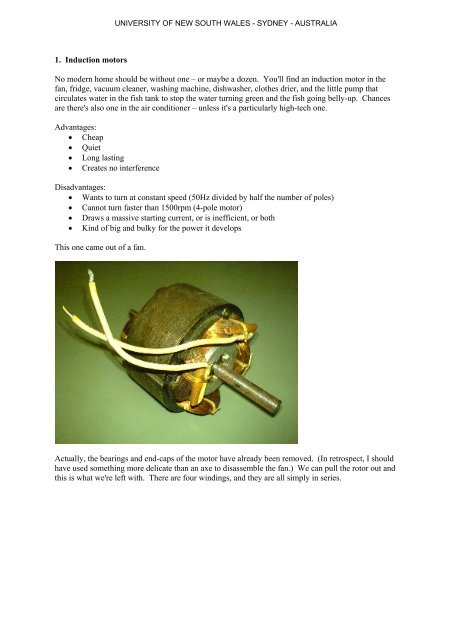How real electric motors work - School of Physics - The University of ...
How real electric motors work - School of Physics - The University of ...
How real electric motors work - School of Physics - The University of ...
Create successful ePaper yourself
Turn your PDF publications into a flip-book with our unique Google optimized e-Paper software.
UNIVERSITY OF NEW SOUTH WALES - SYDNEY - AUSTRALIA<br />
1. Induction <strong>motors</strong><br />
No modern home should be without one – or maybe a dozen. You'll find an induction motor in the<br />
fan, fridge, vacuum cleaner, washing machine, dishwasher, clothes drier, and the little pump that<br />
circulates water in the fish tank to stop the water turning green and the fish going belly-up. Chances<br />
are there's also one in the air conditioner – unless it's a particularly high-tech one.<br />
Advantages:<br />
• Cheap<br />
• Quiet<br />
• Long lasting<br />
• Creates no interference<br />
Disadvantages:<br />
• Wants to turn at constant speed (50Hz divided by half the number <strong>of</strong> poles)<br />
• Cannot turn faster than 1500rpm (4-pole motor)<br />
• Draws a massive starting current, or is inefficient, or both<br />
• Kind <strong>of</strong> big and bulky for the power it develops<br />
This one came out <strong>of</strong> a fan.<br />
Actually, the bearings and end-caps <strong>of</strong> the motor have already been removed. (In retrospect, I should<br />
have used something more delicate than an axe to disassemble the fan.) We can pull the rotor out and<br />
this is what we're left with. <strong>The</strong>re are four windings, and they are all simply in series.
















